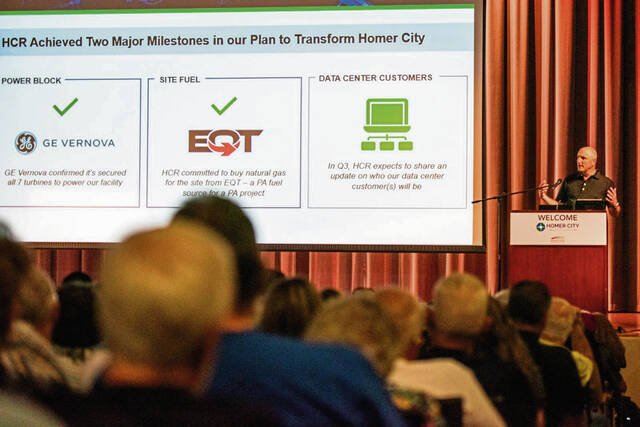https://triblive.com/opinion/destinie-nock-who-pays-the-price-for-new-data-centers/
Destenie Nock: Who pays the price for new data centers?

Amazon plans to spend $20 billion building data campuses in Pennsylvania. Similar proposals are emerging across the state, from the sites of the old Cheswick and Homer City power plants to the Alcoa campus in Upper Burrell. To many, these announcements signal economic growth and innovation. But as an energy systems researcher, I see a different question: Who will pay the bill?
Across America, sprawling, windowless data centers are becoming fixtures of our landscape, popping up in towns, cities and suburbs. Demand has ballooned with the rapid growth of cloud computing and artificial intelligence, and governments are racing to compete for deals with big tech companies. In Northern Virginia alone, more than 300 data centers have sprung up along the hills, tucked alongside wooded bike trails and suburban neighborhoods.
But as data centers move into more densely populated areas — near homes, schools, parks and community centers — residents are beginning to push back. They’re asking what these facilities mean for the economic, social and environmental health of their communities.
Hyperscale data centers are power-hungry giants. They consume massive amounts of electricity to run AI computations (think ChatGPT) and air conditioning to keep servers cool. In Pennsylvania’s regional grid, PJM forecasts suggest that large users like data centers could triple their demand by 2030, from under 10,000 megawatts today to over 30,000 megawatts. For context, a single hyperscale data facility can draw as much power as a small city.
This sudden spike in demand doesn’t come without consequences. The cost to secure enough capacity for future electricity needs skyrocketed from $2.2 billion for 2024-25 to nearly $14.7 billion for 2025-26. Already, Pennsylvanians have felt the impact: This June, default electric rates climbed roughly 15% at Duquesne Light and 9% at West Penn Power. Electricity is becoming more expensive, and data centers are part of that equation.
Meanwhile, many families are already struggling to keep the lights on. One in six households are behind on their utility bills, collectively owing about $21 billion — the highest level since 2021 and up 30% just since the end of last year. Over a third of families earning less than $50,000 reported they couldn’t pay an energy bill at least once in the past year. Yet the current administration’s proposed fiscal year 2026 budget would eliminate $4 billion in Low-Income Home Energy Assistance Program (LIHEAP) funding, cutting off support to about 6 million households who rely on it for heating and cooling. As Mark Wolfe of the National Energy Assistance Directors Association has noted, these families need more support, not less, especially as energy prices continue to rise.
When we build infrastructure to accommodate large users, who should pay? Some argue data centers should bear the costs of grid upgrades needed to serve them. Otherwise, it’s like building a mansion at the end of a dirt road, paving miles of new road to reach it, and sending the bill to everyone else in town.
Yes, data centers can bring jobs and tax revenue. In Northern Virginia, Amazon Web Services’ data‑center hub generated an estimated $34 million in local taxes after benefitting from about $66 million in incentives, plus $1.7 million in community gifts. Those funds helped buy a new ladder fire engine, hire a school resource officer and create homebuyer grants. But we have to ask: Are these benefits enough to outweigh the risks and costs to everyday residents?
There are technical risks, too. Overloading wires can cause overheating or emergency shut-offs. Demand spikes during heat waves could lead to blackouts. And because data centers require constant power, even at night when solar isn’t available, we may keep aging fossil-fuel plants online longer than planned, delaying Pennsylvania’s climate goals.
We all benefit from data centers. Our photos in the cloud, video calls with family and AI tools like ChatGPT rely on them. But we need to ask: At what cost?
If companies want to build data centers here, they should contribute to the system they depend on: covering infrastructure upgrades, investing in renewable energy and supporting utility assistance programs for low-income residents. State records show that roughly 80,000 households lost power during April and May, weeks before June’s rate increase took effect. Nearly 3 million people in the United States have their electricity shut off annually because they cannot afford to pay monthly bills. As demand rises, so will the strain on already struggling households.
A stable, affordable and decarbonized grid benefits everyone. But achieving it requires intentional planning, equitable cost-sharing and policy that prioritizes households, not just the data streams passing through our wires.
Destenie Nock is a Carnegie Mellon University professor and founder of Peoples Energy Analytics.
Copyright ©2025— Trib Total Media, LLC (TribLIVE.com)
